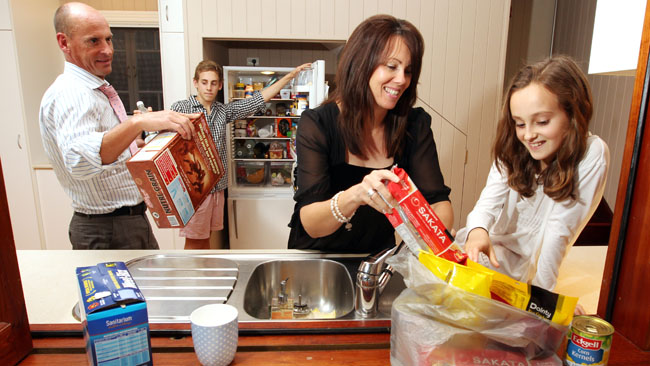
Everyone can get sick or injured. But when it comes to protecting their lifestyle with insurance, it seems females have some catching up to do.
Historically speaking, insurance was sold to the main breadwinner. And more often than not that was the husband.
Today men still earn more, on average, than women. But the gap is closing fast – Australian women now earn 92% of male incomes[1]. And many women now out-earn their husbands.
So you’d expect more women would be taking out insurance to protect their income and their lifestyle.
But despite women making up 45% of the workforce, they still represent only 15-20% of all insured incomes[2].
It’s not just about income
Protecting your income is obviously important. But the fact female incomes are increasing only tells part of the story.
Women are often more financially vulnerable than men – mainly because they typically spend less time in the workforce.
This is partly because of children. But women are also more likely to retire early. And they’re often the ones who have to take time off to look after children or elderly relatives.
Less time in the workforce means less savings, less superannuation, and less of an ability to recover from financial setbacks.
And since women live longer than men, these setbacks can be even more financially damaging over time.
What types of insurance should women have?
Income Protection typically covers up to 80% of your income if you can’t work temporarily because of sickness or injury – making it extremely valuable for working women.
To protect yourself against diseases like cancer, you can take out Recovery (also known as ‘Trauma’) insurance. It can pay a lump sum on diagnosis – helping you replace your income, and assist in covering the costs associated with treatment.
Life and/or Total and Permanent Disability (TPD) insurance can provide a lump sum to you or your beneficiaries if you die or are seriously disabled. This can be vital if you have a family and/or a mortgage to look after.
If you’re self-employed or run a business, you can also cover your fixed business expenses if you can’t work temporarily because of sickness or injury. This could include the cost of finding a replacement if you need one.
How much does it actually cost? Example 1
Let’s take the example of a 35-year old female teacher who earns $60,000 pa. She takes out:
Her total premium is $802.68. At around $15 per week, that’s the equivalent of one take-away meal each week.
Source: Asteron Life Limited, based on a non-smoker taking out Life Cover and Recovery Plus, both with stepped premiums paid annually.
How much does it actually cost? Example 2
Let’s take the example of a 39-year old female doctor who earns $120,000 pa. She takes out:
Her total premium before tax is $4,380. But because her Income Protection premiums are tax-deductible, her after-tax premium reduces to $3,318. At about $64 per week, that’s the equivalent of a take-away meal and a bottle of wine each week.
Source: Asteron Life Limited, based on a non-smoker taking out an Agreed Value Income Advantage policy with a 30-day waiting period, and a Life Cover policy, both with stepped premiums paid annually.
It’s cheaper than the alternative
Everyone knows someone who’s suffered a disease like cancer. But what you may not know about is how much cancer treatment actually costs.
The Cancer Council of NSW estimates a woman with breast cancer could be faced with over $40,000 in lost productivity and out-of-pocket expenses. And that the average lifetime cost of cancer equates to 1.7 years of a household’s income[3].
This helps put the cost of insurance in perspective.
Strategies to make insurance more affordable
It’s worth talking to a financial adviser before you take out insurance, as there are a number of ways you can reduce the effective cost of your premiums.
For example, income protection and business expenses insurance premiums are often tax-deductible.
You may also be able to reduce the effective cost of Life and TPD insurance by taking it out inside super – using your pre-tax money to pay premiums. Bear in mind there may be some restrictions on your benefit if you insure inside super.
If you earn under $58,980 pa, you may be able to make a voluntary super contribution and use the Government co-contribution to help pay your insurance premiums. This also gives your retirement savings a valuable boost.
Get the cover you need
The best way to find out what cover you need is to speak to a financial adviser. They can help you get the right cover, and make sure it’s structured in a way that makes it as cost-effective as possible. Give us a call on 1300 788 650 today!
[1] ‘Australian Social Trends, 2005’ – ABS
[2] ‘Australians at risk’ – IFSA, 2006
[3] The Cancer Council of NSW Media Release, 6 April 2007